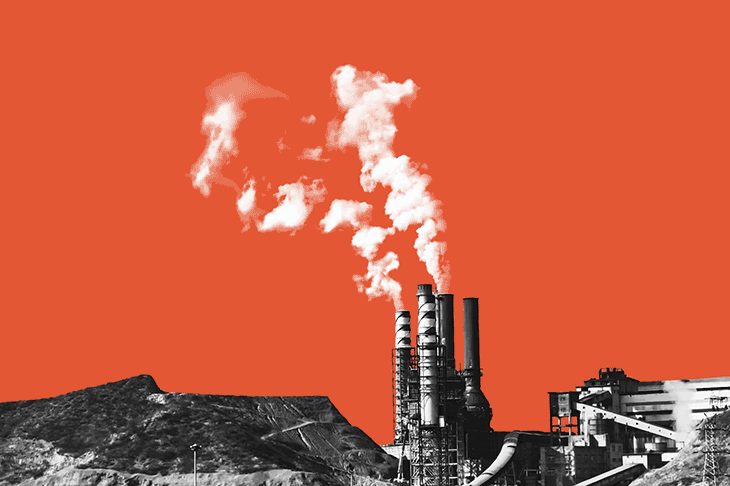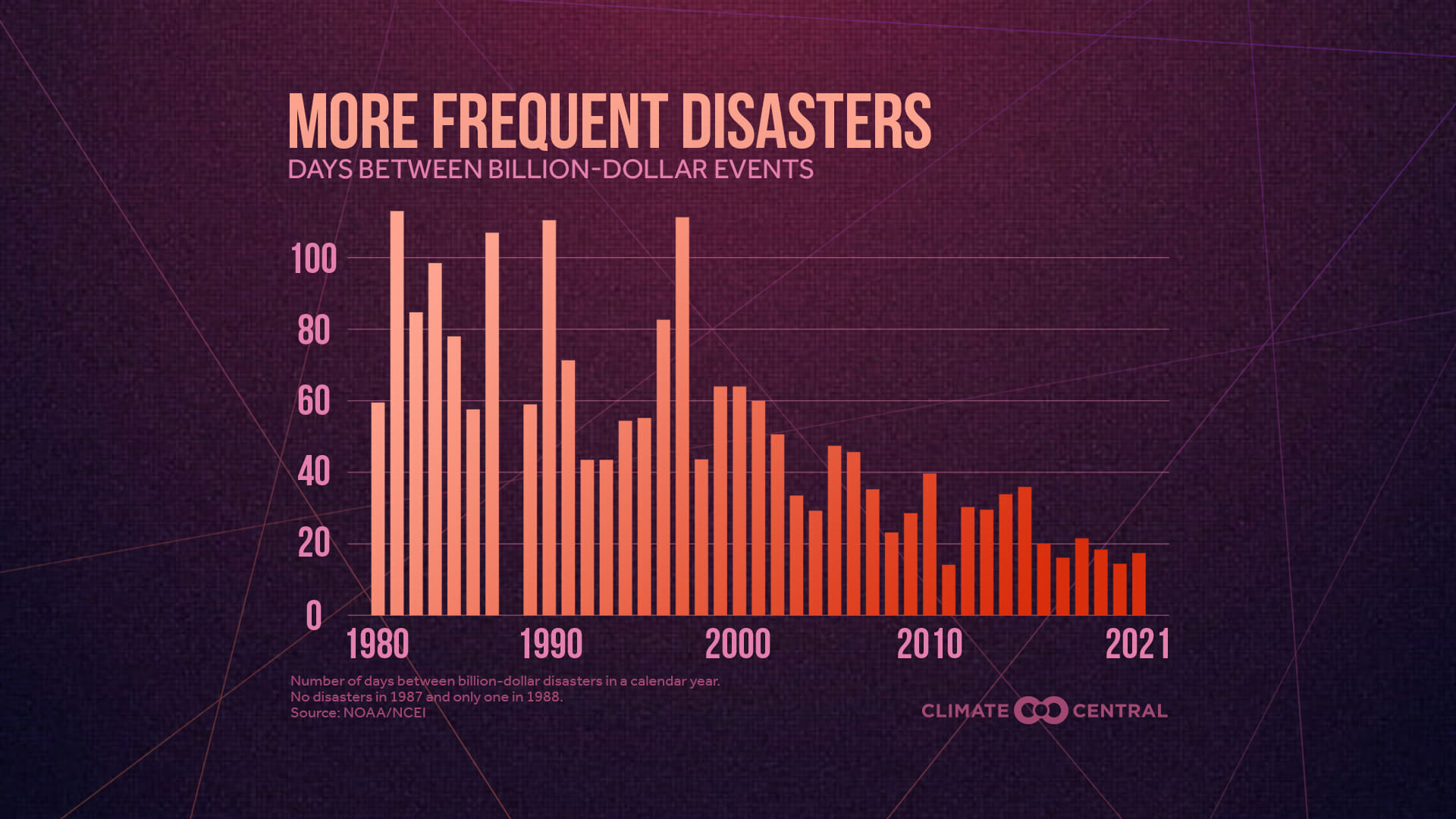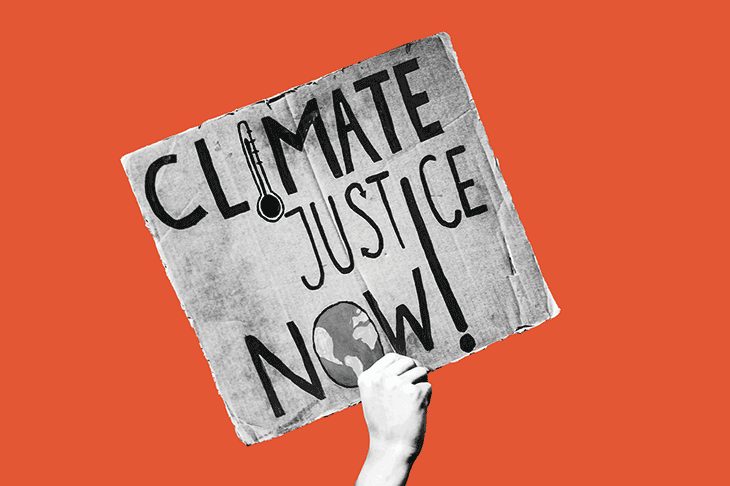Whether you’re new to the climate story or a veteran reporter aiming to refine how you explain climate change to audiences, this guide is for you. It’s adapted from the work of renowned climate scientist and communicator extraordinaire, Katharine Hayhoe. Be sure to check out Hayhoe’s climate explainer videos, including those from her Global Weirding series as well as her TED and Tedx talks, articles, Q&As, and congressional testimony for more insight.
Climate Science 101
Climate scientist Katharine Hayhoe explains the basics of climate change for beginners and those in need of a refresher.

How is global warming different from climate change?
Global warming refers to the Earth’s most recent period of rising global average temperatures that began in the 1800s following the Industrial Revolution. The term climate change encompasses global warming but also refers to the broader changes that are happening to the planet as a result of global warming, including rising sea levels, melting glaciers, increases in the frequency and/or intensity of extreme weather events like heat waves and heavy precipitation events, and shifts in flower and plant blooming times.
What’s the difference between weather and climate?
Weather describes the conditions in a certain place at a certain time, like a sunny day or a week-long cold snap. Climate is the long-term average of weather over decades. Think of it this way: weather is like your mood, and climate is like your personality. Of course, even with global warming, cold days still occur. Don’t be fooled by politicians or pundits who point to snow and ice outside in an attempt to reject the reality of global warming. A single cold day, month, or even year doesn’t rebut the iron-clad data that shows the entire planet is warming over climate time scales.
How do we know the Earth is warming?
Climate scientists track the Earth’s temperature in modern times using thermometers and other scientific instruments at weather stations, ocean buoys, and satellites. There are thousands of these tools worldwide that scientists use to calculate global average temperatures.
Scientists also use “natural thermometers” — tree rings, ice cores, coral reefs, stalactites, and lakebed sediment — to see how the Earth’s temperature has changed in the far past — and how recent changes in the climate are decisively different from historic, cyclical changes.
Throughout most of human history, the Earth’s global average temperature was roughly as stable as that of the human body. It went up and down from year to year, and sometimes there were lengthy warm or cool periods in certain regions — the North Atlantic’s Medieval Warm Period and Little Ice Age, for example — but these variations were minor compared to what we’re seeing now.
Since 1900, the planet has warmed by approximately 1.1 degrees Celsius or 1.9 degrees Fahrenheit. Each of the last five decades has been successively warmer than the decade before, and the Earth is now warmer than any time in at least 12,000 years. In fact, as of 2022, the past seven years were the hottest in recorded history. Put simply, the Earth is running a fever, and it’s wreaking havoc for everything we care about — our food, water, health, safety, economy, and more.
While a degree or two might not sound like a lot of global warming, we know that even small changes in the global average temperature can cause major changes. As it is, we see examples of the consequences of a warming planet all over: monster floods, rampant wildfires, and longer and more deadly heatwaves. And yet, if we do nothing to solve climate change, global temperature rise is forecast to reach 2 to 4 degrees C above pre-industrial levels by the end of this century, with far worse disasters and ensuing chaos sure to follow.

Why is the climate changing?
Naturally-occurring carbon dioxide, along with methane, water vapor, and other gasses, is what keeps the Earth at temperatures hospitable for life as we know it. As the sun’s energy shines down and heats the Earth, a layer of these gasses forms a natural blanket that traps a great deal of that heat in our atmosphere, keeping the Earth much warmer than it would be otherwise; without this natural blanket, there would be no life on Earth.
So, if the blanket’s natural, what’s the problem? What happens when we dig up and burn fossil fuels is that we’re pumping huge extra amounts of carbon dioxide and other heat-trapping gasses into the atmosphere, effectively wrapping a second blanket around the planet that it doesn’t need. This second blanket is trapping too much heat, heat that would otherwise escape into space. As we pump more carbon dioxide into the atmosphere, the second blanket gets thicker, and the Earth warms.

It’s not the sun, natural cycles, or volcanoes. It’s us.
In the past, the Earth’s climate has changed due to natural causes, including fluctuations in energy from the Sun, massive and sustained volcanic eruptions, and shifts in the Earth’s orbit.
Scientists have examined causes like these to see if they could be behind the current phenomenon of global warming, and the answer, unequivocally, is no. According to natural factors, in fact, the Earth should be cooling, very gradually. Instead, it’s warming rapidly, and human emissions of heat-trapping gasses are exclusively to blame.
Fossil fuel use accounts for roughly three quarters of heat-trapping gas emissions. The remaining quarter comes from deforestation — forests help store carbon, but they release it when they’re destroyed — waste decay, and agriculture.
Do scientists agree that climate change is real?
The field of climate science stretches back almost 200 years! For more than 150 years, scientists have known that mining coal and burning fossil fuels produces heat-trapping gasses. For more than 120, they’ve been able to calculate how much the Earth would warm if humans artificially increased atmospheric carbon-dioxide levels. And it’s been more than 55 years since US scientists formally warned President Lyndon B. Johnson of the dangers of climate change. Today, the U.S. National Academy of Sciences and leading scientific organizations worldwide acknowledge the reality of and risks posed by human-caused climate change. As renowned climate scientist Michael Mann told “60 Minutes” in 2020, “There’s about as much scientific consensus about human-caused climate change as there is about gravity.”
Public confusion over the reality of climate change has largely been manufactured by industry interests and ideologues to sow doubt and prevent climate action. Oil and gas companies such as Exxon have in fact spent decades waging campaigns to mislead the public about climate change.
What are the impacts of climate change?
One of the most immediate ways climate change affects people is through weather extremes. As the world warms, climate change is loading the weather dice against us, making adverse and catastrophic weather events both more likely and worse. Many of the effects scientists long predicted would result from global climate change are happening now, including:
- Intense, prolonged heatwaves. These include the record-breaking ones we’ve seen around the world in recent years, from Asia to Europe to North America.
- Heavier precipitation events. Warmer air holds more water vapor, so in the era of climate change, when a stormfront rolls in, there’s more moisture available to be swept up and dumped to the ground. This often results in massive inland flooding.
- Stronger droughts. While some parts of the world get hotter and wetter amid climate change, others are getting hotter and drier. In drier regions, warm temperatures increase evaporation, drying soils and strengthening the high pressure systems associated with drought. The high pressure systems, in turn, can divert storms, leaving these regions all the more lacking in rain.
- Larger wildfires. In fire-prone areas such as western Canada and eastern Australia, fires are burning over massively wider areas, due to the abundance of kindling that dry conditions can make of wooded and grassy areas.
- Stronger hurricanes, tropical cyclones, and typhoons. A warmer planet means warmer oceans, which absorb over 90% of the excess heat resulting from climate change. As storms form and pass over warmer water, they absorb more heat and water vapor, supercharging them and boosting the damage they cause on landfall.
Through extreme-event attribution, scientists can put a number on the extent to which climate change contributed to a given event. The devastating floods in Pakistan in 2022, for example, were made up to 50% worse by climate change. Hurricane Ian, which rocked Florida in 2022, was made at least 10% worse. And the 2020 heatwave that led to a record spike in wildfires across the Siberian Arctic in 2020, was at least 600 times more likely due to climate change. Importantly, not all extreme weather is due to climate change; but the data is clear and consistent that climate change is resulting in more storms and worse storms.
Why should we care?
Human civilization — our cities, our infrastructure, our agriculture, and how we allocate our water, energy, food, and other resources — developed during a time of relative climate stability. The changes our climate is currently undergoing are faster and unlike anything humankind has ever lived through. And we’re not prepared.
Left unchecked, climate change will come at the cost of gargantuan amounts of death and destruction, widespread food and water shortages, and all forms of global unrest. No matter where we live, we will be touched by climate catastrophe, but crucially some will bear a much worse burden than others. Worldwide, often due to systemic exploitation and inequality, climate change hurts first and worst Indigenous groups, communities of color, and the poor. Ironically, these are invariably the people whose low-carbon lifestyles contribute least to the climate emergency. According to Oxfam America, the world’s richest 10% produce more than half of the world’s carbon emissions, while half of the poorest are responsible for just seven percent of emissions. The same pattern is reflected on the world stage: Lesser developed countries with low carbon emissions are suffering much worse climate effects than oil and gas-guzzling wealthy nations.
In 2019, the United Nations Intergovernmental Panel on Climate Change warned that a leading threat that climate change poses to humanity is food insecurity — especially in the Global South, where people depend on small-scale agriculture which is more vulnerable to droughts, flooding, and other forms of extreme weather. The World Health Organization estimates that between 2030 and 2050, climate change, if it’s not reined in, will cause “approximately 250,000 additional deaths per year, from malnutrition, malaria, diarrhea, and heat stress.”
The financial burden from a changing climate is also massive. In recent years, extreme weather events in the US have routinely cost the country upwards of $100 billion annually.

Is it too late to change course?
Yes and no! Let’s start with the bad news: Even if we could flip a magic switch today to curtail all fossil fuel use, we’d still see some continued warming — and pursuant climate impacts — from the carbon emissions we’ve already pumped into the atmosphere.
The good news is that we CAN change, and the sooner we do so the more consequences we can avoid. Specifically, the sooner we replace traditional (and dirty) fossil fuel energy with cleaner and renewable sources — wind and solar, especially — the less temperature rise and fewer disasters we’ll see over time.
What can we do about it?
Any form of meaningful climate action will necessarily include major changes from governments and industries. But that doesn’t mean we as individuals can’t do our part to help. One of the most important things individuals can do, in fact, is talk about climate change and how it will affect us. According to the Yale Program on Climate Change Communication, in 2021, only about one-third of Americans said they hear about climate change on an occasional basis or hear about it from the press at least once a week. Only a third of people in the U.S. hear anyone talk about climate change, even occasionally. Yet nearly four-fifths of Americans are interested in hearing more about climate change. That’s a huge gap between what people want and what they get — and for newsrooms it’s a great opportunity.
Importantly, talking about climate change doesn’t only mean talking about the problem. Humanity has the tools to do a whole lot about climate change right now, should we choose to. And the solutions we choose can’t just sound good on paper — they need to square with the science of climate change.
In general, we need climate solutions that will:
- Generate energy from clean sources. Fossil fuels have helped our societies make great progress, but they take us further at our peril. Any solution to the climate crisis includes energy sources that don’t produce carbon dioxide and other heat-trapping gasses.
- Reduce heat-trapping gas emissions. In addition to the manufacturing and power industries, this includes from other sectors, like agriculture and transportation.
- Use resources more efficiently. A 2019 study estimated that the US could cut its carbon emissions in half through efficiency alone. For example, one-third of all food produced worldwide, at no small cost in energy and water resources, goes uneaten. And the combined energy use of always-on but inactive devices in the US, like computers left plugged in at night, is estimated to equal that of 50 large power plants and costs households $19 billion every year.
- Suck carbon dioxide we’ve emitted out of the atmosphere. Store it in the soil, where it can help restore damaged land or turn it into fuel, stone, and other useful products.
For a comprehensive list of viable climate solutions, refer to Project Drawdown’s Solutions Library. And remember that the best climate solutions often fix other problems at the same time, especially when it comes to injustice and inequity.
Finally, to be sure, solutions are needed at all levels of society. That includes:
- Global and national. Recent commitments by large, polluting countries and multinational companies to achieve “net zero” emissions — meaning greenhouse gas emissions are balanced out or offset by an equal amount of carbon removed from the atmosphere — are a start. Whether or not these entities follow through is another story (and one journalists everywhere can strive to tell).
- Regional and local solutions. Many states, provinces, and cities have pioneered climate solutions, while national leaders have lagged behind on climate. Examining the solutions they’ve implemented, how they’ve worked or not, and who has benefitted from those solutions can offer insights as to what might work elsewhere.
- Personal, lifestyle solutions. Everyone can do their part, reflecting on the carbon footprints of how they eat, how they shop, how they get around, and much more.
The bottom line is that climate change affects everyone. It’s here now, and the impacts will only get more serious with time. The future is in our hands, though, and we have a fleeting, can’t-miss opportunity to turn things around.
Note: This guide was first published on Mar 28, 2021.


